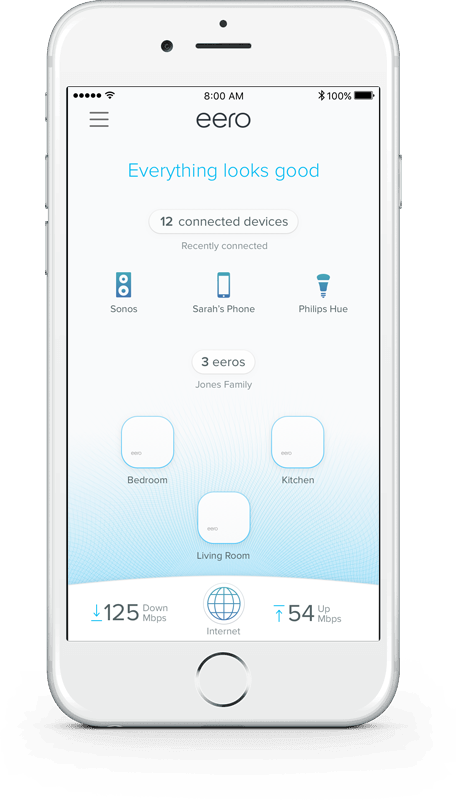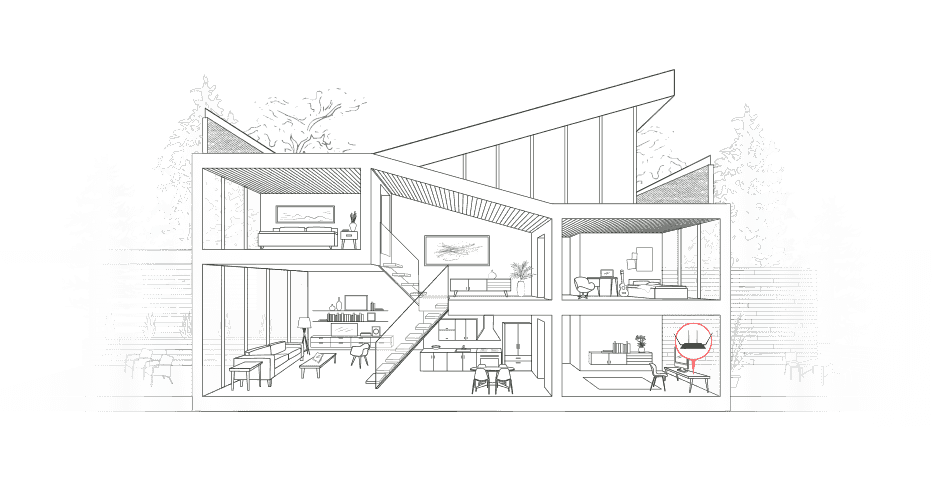Relying on a single router is like asking a loud speaker in your living room to provide great sound throughout your home. It’s simple physics: WiFi waves don’t go through walls well and have an even harder time climbing stairs. Ever tried to stream a show from your bedroom when your router’s in the office downstairs? It’s a buffering nightmare.
To solve this, you need multiple access points — devices that broadcast WiFi — distributed throughout your home. That’s what you’ll find in office buildings, both big and small. But these solutions are out of reach for most of us, and all we’re left with is a band-aid solution: range “extenders,” which don’t live up to their name.

With eero, you simply plug one device into your modem. Additional eeros simply need power from a standard outlet. They automatically connect to each other to create a single wireless mesh network that covers your whole home. If you already have Ethernet wiring, you can always choose to hardwire your additional eeros.
Three eeros cover the typical home. You can start with one and eero-up depending on the size of your space.

For fast, reliable WiFi in every room, you need a set of access points — devices that broadcast WiFi — distributed throughout your home. That’s why WiFi is so great at work: if you lifted up the ceiling tiles, you’d see access points throughout the office. These enterprise systems are typically wired and linked to a rack of WiFi equipment in an IT closet that makes sure your laptop talks to the right access point and maintains a solid, reliable connection. There’s an IT person to manage everything.
Until now, recreating this sort of enterprise setup at home has meant expensive Ethernet wiring, painful manual setup, custom firmware, and a network engineer. eero brings this enterprise model to the home. Multiple eeros connect to form a mesh network — the first available on the consumer market. Unlike the “hub-and-spoke” model of a single router and a range extender, each eero in the network is created equal and the result is an incredibly fast, resilient network.
If you’ve ever tried to give your router a boost with an “extender,” then you’ve experienced true disappointment. That’s because “extenders” can only stretch your signal a single hop — you can’t connect multiple in a row. They often create an entirely separate network (SSID), so you find yourself having to continually switch from one network to the other as you move through your house.
Worse, many range “extenders” cut your bandwidth in half because they rely on a single wireless radio to both send and receive data. In contrast, each eero has two radios — both of which communicate with your devices and sync with other eeros — so your connection is always fast. Not only does an eero system operate on a single network name (SSID), but you can also walk throughout your home and devices like your iPhone will connect to the nearest eero.

